Mycoplasma pneumoniae Chlamydophila pneumoniae - Mikrogen
Mycoplasma pneumoniae Chlamydophila pneumoniae - Mikrogen
Mycoplasma pneumoniae Chlamydophila pneumoniae - Mikrogen
You also want an ePaper? Increase the reach of your titles
YUMPU automatically turns print PDFs into web optimized ePapers that Google loves.
Ref.: Dia-MCpn-050.Vs1<br />
<strong>Mycoplasma</strong> <strong>pneumoniae</strong><br />
<strong>Chlamydophila</strong> <strong>pneumoniae</strong><br />
Real-Time PCR<br />
User Manual<br />
Available on:<br />
ABI 7000 / 7300 / 7500 / 7900<br />
Roche LightCycler 480 / 2.0<br />
Biorad Icycler / IQ5 / CFX96<br />
Qiagen Rotor-Gene 6000<br />
Stratagene MX3000P / 3005P<br />
In combination with:<br />
DIA-EIC/DNA(DR)-050<br />
DIA-EIC/DNA(TR)-050<br />
DIA-EIC/DNA(Cy5)-050<br />
PAGE 1<br />
24.02.2012<br />
www.diagenodediagnostics.com
Contents<br />
General information . . . . . . . . . . . . . . . . . . . . . . . . . . . . . . . . . . . . . . . . . . . . . . . . . . . . . . . . . . . . . . . . .4<br />
Pathogen information . . . . . . . . . . . . . . . . . . . . . . . . . . . . . . . . . . . . . . . . . . . . . . . . . . . . . . . . . . . . . . . .4<br />
Product description . . . . . . . . . . . . . . . . . . . . . . . . . . . . . . . . . . . . . . . . . . . . . . . . . . . . . . . . . . . . . . . . . .4<br />
Storage . . . . . . . . . . . . . . . . . . . . . . . . . . . . . . . . . . . . . . . . . . . . . . . . . . . . . . . . . . . . . . . . . . . . . . . . . . . . .5<br />
Warnings and precautions . . . . . . . . . . . . . . . . . . . . . . . . . . . . . . . . . . . . . . . . . . . . . . . . . . . . . . . . . . . .5<br />
Material required, not provided . . . . . . . . . . . . . . . . . . . . . . . . . . . . . . . . . . . . . . . . . . . . . . . . . . . . . . . .6<br />
Human samples used / Claims of the kit . . . . . . . . . . . . . . . . . . . . . . . . . . . . . . . . . . . . . . . . . . . . . . . .7<br />
Human samples Collection, Storage and Transport . . . . . . . . . . . . . . . . . . . . . . . . . . . . . . . . . . . . . . .7<br />
1. Samples' Collection .............................................................7<br />
2. Samples' Storage ...............................................................7<br />
3. Samples' Transport .............................................................7<br />
Protocol . . . . . . . . . . . . . . . . . . . . . . . . . . . . . . . . . . . . . . . . . . . . . . . . . . . . . . . . . . . . . . . . . . . . . . . . . . . .8<br />
A . Procedure to be followed<br />
A.1. Extraction procedure ..........................................................8<br />
A.2. PCR procedure ...............................................................8<br />
A.3. Amplification and real-time system procedures ....................................9<br />
A.4. Interpretation of results .......................................................10<br />
B . Annexes of the procedure (points I-II-III-IV-V-VI)<br />
I. DNA extraction & inhibition control (optional) .......................................11<br />
II. Sample Extraction/DNA Isolation .................................................12<br />
III. PCR Reaction Set-up ..........................................................14<br />
IV. PCR profile ...................................................................16<br />
V. Selection of the appropriate dyes .................................................17<br />
ABI 7000-7300-7500-7900 .......................................................17<br />
Roche Lc480-Lc2.0 ............................................................17<br />
Biorad iCycler-IQ5-CFX96 .......................................................17<br />
Stratagene MX3000P-3005P .....................................................18<br />
Qiagen Rotor-Gene ............................................................18<br />
VI. Interpretation of results ........................................................19<br />
Troubleshooting guide . . . . . . . . . . . . . . . . . . . . . . . . . . . . . . . . . . . . . . . . . . . . . . . . . . . . . . . . . . . . . . .20<br />
Specifications . . . . . . . . . . . . . . . . . . . . . . . . . . . . . . . . . . . . . . . . . . . . . . . . . . . . . . . . . . . . . . . . . . . . . .21<br />
Sensitivity ......................................................................21<br />
Specificity ......................................................................21<br />
Product Use Limitations . . . . . . . . . . . . . . . . . . . . . . . . . . . . . . . . . . . . . . . . . . . . . . . . . . . . . . . . . . . . .22<br />
Quality Control . . . . . . . . . . . . . . . . . . . . . . . . . . . . . . . . . . . . . . . . . . . . . . . . . . . . . . . . . . . . . . . . . . . . .22<br />
References . . . . . . . . . . . . . . . . . . . . . . . . . . . . . . . . . . . . . . . . . . . . . . . . . . . . . . . . . . . . . . . . . . . . . . . .22<br />
Explanation of symbols . . . . . . . . . . . . . . . . . . . . . . . . . . . . . . . . . . . . . . . . . . . . . . . . . . . . . . . . . . . . . .23<br />
Notice to purchaser . . . . . . . . . . . . . . . . . . . . . . . . . . . . . . . . . . . . . . . . . . . . . . . . . . . . . . . . . . . . . . . . .24<br />
PAGE 3<br />
www.diagenodediagnostics.com
PAGE 4<br />
DIAGENODE MYCOPLASMA PNEUMONIAE / CHLAMYDOPHILA PNEUMONIAE REAL-TIME PCR USER MANUAL<br />
General Information<br />
Diagenode’s <strong>Mycoplasma</strong>/<strong>Chlamydophila</strong> <strong>pneumoniae</strong> Real Time PCR is an in vitro diagnostic<br />
assay used by a clinical laboratory and by trained laboratory scientists.<br />
Diagenode’s <strong>Mycoplasma</strong>/<strong>Chlamydophila</strong> <strong>pneumoniae</strong> Real Time PCR has been validated on:<br />
• ABI (7000 / 7300 / 7500 /7900)<br />
• Roche (Lc2.0 / Lc480)<br />
• Biorad (iCycler / IQ5 / CFX96)<br />
• Qiagen Rotor-Gene (3000 / 6000)<br />
• Stratagene (MX3000P / 3005P)<br />
• Cepheid (SmartCycler II) (depending on software)<br />
Pathogen Information<br />
<strong>Mycoplasma</strong> <strong>pneumoniae</strong> & <strong>Chlamydophila</strong> <strong>pneumoniae</strong> are the organisms responsible for most<br />
of the cases of atypical pneumonia in children.<br />
Atypical pneumonia due to these bacteria usually causes milder forms of pneumonia and are<br />
characterized by a more protracted course of symptoms unlike other forms of pneumonia which<br />
can come on more quickly with more severe early symptoms.<br />
<strong>Mycoplasma</strong> <strong>pneumoniae</strong> can give rise to mild upper respiratory tract infection, bronchitis,<br />
bronchiolitis and bronchopneumonia. The disease usually starts as influenza like syndrome with<br />
the predominant symptoms being fever, illness, headache, scratchy sore throat and cough.<br />
<strong>Chlamydophila</strong> <strong>pneumoniae</strong> has been associated with pharyngitis, sinusitis and bronchitis<br />
Product Description<br />
The product contains primers, probes and a positive control. The master mix is not included.<br />
<strong>Mycoplasma</strong>/<strong>Chlamydophila</strong> <strong>pneumoniae</strong> Real-Time PCR: 50 PCRs (50 μl PCR volume), 2<br />
pockets.<br />
I. Primers & probe’s pocket:<br />
1. <strong>Mycoplasma</strong> and <strong>Chlamydophila</strong> <strong>pneumoniae</strong> primers & double-dye probes<br />
(<strong>Mycoplasma</strong> <strong>pneumoniae</strong>, FAM, emission 520 nm & <strong>Chlamydophila</strong> <strong>pneumoniae</strong>,<br />
Yellow Dye, emission 548 nm): 250 μl, mallow tube.<br />
2. ddH2O: 1500 μl, dark blue tube.<br />
II. Positive control’s pocket:<br />
1. <strong>Mycoplasma</strong> and <strong>Chlamydophila</strong> <strong>pneumoniae</strong> positive control: 250 μl, green tube.<br />
The <strong>Mycoplasma</strong>/<strong>Chlamydophila</strong> <strong>pneumoniae</strong> Real-Time PCR (DIA-MCpn-050) is used in<br />
combination with the DNA extraction & inhibition control Real-Time PCR (DIA-EIC/DNA-050).<br />
Europe Diagenode sa / CHU - Tour GIGA - B34 - 3 e étage // Avenue de l’Hôpital, 1 // 4000 Liège (Sart Tilman) // Belgium // Phone: (+32) 4 364 20 50 // Mail: info@diagenode.com
DNA extraction & PCR inhibition control Real-Time PCR: 50 PCRs (50 μl PCR volume), 1 box.<br />
Storage<br />
<strong>Mycoplasma</strong>/<strong>Chlamydophila</strong> <strong>pneumoniae</strong> Real Time PCR kit must be stored at -20°C, before and<br />
after opening.<br />
NB:<br />
If using DIA-EIC/DNA-050, the kit and the DNA virus culture must be stored at -20°C.<br />
Please check production date mentioned on the pocket and tube labels. The product has a shelf<br />
life of 24 months at -20°C starting from the production date. Opened kits are stable for 12 months<br />
at -20°C.<br />
NB:<br />
Please make aliquots to avoid freeze/ thaw cycles and during use all components should be kept<br />
on ice.<br />
STORE IN DARK PLACE<br />
Warnings and Precautions<br />
General recommendations<br />
• Read all instruction before performing the experiment.<br />
• After use, material-reagents-waste must be handled as potentially infectious and must be<br />
thrown in a specific waste bin for biological substances.<br />
• Do not substitute reagents from the kit with different batch numbers or from other<br />
manufacturers.<br />
Extraction/PCR<br />
• Diagenode’s real-time PCR kits must be used by scientists/laboratory technicians with<br />
a strong know-how of molecular biology and more particularly with real-time PCR<br />
platform.<br />
• To obtain optimal results, Diagenode suggests some appropriate extraction methods<br />
to avoid as much as possible PCR inhibitors (see point II. Sample Extraction/ DNA<br />
Isolation).<br />
• Extraction and/or inhibition control must be used for each reaction of PCR.<br />
Caution<br />
I. (DNA virus) primers & double-dye probe:<br />
If Orange Dye (DIA-EIC/DNA(DR)-050), emission 575 nm: 250 μl, blue tube.<br />
If Texas red (DIA-EIC/DNA(TR)-050), emission 603 nm: 250 μl, red tube<br />
If Cy5 (DIA-EIC/DNA(Cy5)-050, emission 662 nm: 250 μl, dark blue tube.<br />
II. DNA virus culture: 500 μl, yellow tube.<br />
Diagenode commercializes a qualitative extraction and/or inhibition control . It is the responsible<br />
of the user to optimize the extraction procedure according to the result obtained for this<br />
extraction and/or inhibition control in order to get an appropriate result .<br />
PAGE 5<br />
www.diagenodediagnostics.com
PAGE 6<br />
DIAGENODE MYCOPLASMA PNEUMONIAE / CHLAMYDOPHILA PNEUMONIAE REAL-TIME PCR USER MANUAL<br />
• Virus control extraction must be manipulated using a safety cabinet for a manual extraction<br />
procedure or in a specific area for automated extraction procedures; as suggested by the<br />
manufacturer.<br />
Contamination<br />
• Perform nucleic acid release, isolation and real time amplification in separate laboratory<br />
areas.<br />
• Keep all tubes and vials closed when not in use.<br />
• The PCR laboratory (safety cabinet, DNA/RNA extraction platform, bench coat, etc.) must<br />
be cleaned after each PCR experiment with appropriate solutions.<br />
• The contaminated kits must be thrown in a specific waste bin for biological substances.<br />
• The kit should not be used by somebody displaying symptoms of the disease being detected<br />
by this kit.<br />
• The positive and negative PCR control must be performed with each reaction of PCR.<br />
• Gloves must be worn.<br />
• Aerosol resistant tips must be used for all PCR mixtures.<br />
• Tubes must be harvested before opening.<br />
• Do not pipette any of the materials by mouth. Do not smoke, eat or drink in areas which<br />
specimens or kit reagents are handled.<br />
• The experiment should not be carried out during pregnancy due to risks to the newborn<br />
baby.<br />
CAUTION<br />
Storage of the kit at room temperature can lead to the degradation of the primers / probes /<br />
positive control . This will lead to a decreased sensitivity and we would strongly advise a new kit .<br />
Material Required, Not Provided<br />
• Pipettes<br />
• Sterile pipette tips with filters<br />
• Powder-free gloves<br />
• Vortex mixer<br />
• Desktop centrifuge<br />
• RNase/Dnase-free microcentrifuge tubes (1,5 and/or 2 ml)<br />
• RNase/DNase free water<br />
• DNA isolation kit (see point II. Sample Extraction/DNA Isolation)<br />
• Consumables and accessories (reaction tubes, microcentrifuge, reaction plates, adhesive<br />
seal) for an ABI / Roche / Biorad / Qiagen / Stratagene or Cepheid system<br />
• Master mix (see point III. PCR Reaction Set-up)<br />
• Real time PCR instrument: ABI / Roche / Biorad / Qiagen / Stratagene or Cepheid.<br />
Europe Diagenode sa / CHU - Tour GIGA - B34 - 3 e étage // Avenue de l’Hôpital, 1 // 4000 Liège (Sart Tilman) // Belgium // Phone: (+32) 4 364 20 50 // Mail: info@diagenode.com
Human sample used / Claims of the kit<br />
<strong>Mycoplasma</strong>/<strong>Chlamydophila</strong> <strong>pneumoniae</strong> Real Time PCR kit is dedicated at the detection of<br />
the <strong>Mycoplasma</strong> <strong>pneumoniae</strong> and <strong>Chlamydophila</strong> <strong>pneumoniae</strong> in bronchoalveolar lavage,<br />
sputum and nasopharyngeal swabs/washes samples.<br />
The kit is used on samples from potentially infected patients by <strong>Mycoplasma</strong> <strong>pneumoniae</strong><br />
and/or <strong>Chlamydophila</strong> <strong>pneumoniae</strong>.<br />
Human samples’ Collection, Storage and Transport<br />
I. Samples’ Collection<br />
Human respiratory samples such as bronchoalveolar lavage, sputum and nasopharyngeal<br />
swabs/washes should be collected.<br />
II. Samples’ Storage<br />
Human sample must be stored at 4°C for up to 24 hours or frozen at -20°C or -80°C for longer<br />
periods of time.<br />
Human samples should be stored in DNase/RNAse free polypropylene tubes. The sensitivity<br />
of the PCR could be reduced if you keep freezing and thawing human samples repeatedly.<br />
Avoid freeze / thaw cycles, which will affect the sensitivity of the assay.<br />
III. Samples’ transport<br />
Human samples must be transported in adapted containers. The samples must be transported<br />
following the local and national regulations for the transport of pathogen material.<br />
Human samples should be transported at -20°C.<br />
PAGE 7<br />
www.diagenodediagnostics.com
PAGE 8<br />
DIAGENODE MYCOPLASMA PNEUMONIAE / CHLAMYDOPHILA PNEUMONIAE REAL-TIME PCR USER MANUAL<br />
Protocol<br />
A. Procedures to be followed<br />
A .1 Extraction procedure (see point II . Sample Extraction/DNA Isolation)<br />
Perform this procedure on the appropriate level containment facility.<br />
Please follow the following steps:<br />
• Place sample(s) at room temperature<br />
NB:<br />
It is recommended to manipulate potential infected samples under a safety cabinet.<br />
• Choose the appropriate extraction method validated for your sample. (See point II for<br />
Diagenode validated methods).<br />
Please, follow manufacturer’s instructions to perform extractions .<br />
• (Optional) If using DNA extraction & PCR inhibition control Real-Time PCR, add 10 μl of<br />
the Diagenode DNA extraction & inhibition control (DNA virus culture tube) in the extracted<br />
volume (see point I . DNA Extraction & inhibition control and II . Sample Extraction/DNA<br />
Isolation).<br />
NB:<br />
The Diagenode DNA extraction & PCR inhibition control Real-Time PCR is provided separately,<br />
ref: DIA-EIC/DNA-50. You can select the dye adapted to your real-time PCR system (see point V.<br />
Selection of the appropriate dyes).<br />
• When the extraction procedure is finished, prepare the DNA on ice before using it (or at<br />
-20°C if you don’t use it the same day).<br />
• Place the <strong>Mycoplasma</strong> <strong>pneumoniae</strong> & <strong>Chlamydophila</strong> <strong>pneumoniae</strong> positive control tube<br />
(for long term storage) on ice.<br />
NB:<br />
If the extracted samples are at room temperature for a long period of time, DNA could be degraded.<br />
If DNA is degraded, the sensitivity of the PCR will decrease!<br />
If the <strong>Mycoplasma</strong> <strong>pneumoniae</strong> & <strong>Chlamydophila</strong> <strong>pneumoniae</strong> positive control tube is at room<br />
temperature for a long period of time (> 24 hours), the positive control could be degraded and<br />
influence the results obtained!<br />
A .2 PCR procedures<br />
Perform the procedure on the appropriate level containment facility.<br />
Master mix suggested: Quantifast Multiplex + R kit (ref : 204756), Qiagen (Not supplied) (see point<br />
III . PCR Reaction Set-up).<br />
NB:<br />
Rotor-Gene Multiplex PCR Kit (Qiagen) (Not supplied) for Qiagen Rotor-Gene<br />
LightCycler ® TaqMan ® Master (Roche) (Not supplied) for LightCycler 2.0 (Lc2.0)<br />
Europe Diagenode sa / CHU - Tour GIGA - B34 - 3 e étage // Avenue de l’Hôpital, 1 // 4000 Liège (Sart Tilman) // Belgium // Phone: (+32) 4 364 20 50 // Mail: info@diagenode.com
Please follow the following steps:<br />
• Place the <strong>Mycoplasma</strong>/<strong>Chlamydophila</strong> <strong>pneumoniae</strong> Real-Time PCR kit at room<br />
temperature: the mallow tube (<strong>Mycoplasma</strong> and <strong>Chlamydophila</strong> <strong>pneumoniae</strong> primers &<br />
double-dye probe), the dark blue tube (ddH2O) from Primers/probe’s pocket.<br />
• If using the DNA extraction & PCR inhibition control Real-Time PCR, place the tube<br />
containing primers & double-dye probe at room temperature.<br />
• Place the master mix on ice.<br />
NB:<br />
Spin down all solutions briefly when thawed and pipette up and down to homogenize them.<br />
• Select the appropriate protocol depending of the Real-Time PCR system used (see point<br />
III. PCR Reaction Set-up) and prepare mixes without the sample and/or the <strong>Mycoplasma</strong><br />
and <strong>Chlamydophila</strong> <strong>pneumoniae</strong> positive control.<br />
NB:<br />
Prepare the same mix for all samples.<br />
To validate the run, you need to perform a negative (water) and a Diagenode positive control<br />
PCR.<br />
If DIA-EIC/DNA-050 is not use, replace Diagenode DNA extraction & PCR inhibition control doubledye<br />
probe & primers by ddH2O.<br />
• Dispense the mixe prepared in appropriate tubes/capillaries or a 96 well plate.<br />
• Add samples and the Diagenode positive control (same volume as samples).<br />
• Close tubes or the plate.<br />
NB:<br />
If the <strong>Mycoplasma</strong> and <strong>Chlamydophila</strong> <strong>pneumoniae</strong> primers & double-dye probe tube (mallow)<br />
is at room temperature for a long period of time, primers and probes could be degraded and<br />
influence (> 24 hours) the results obtained!<br />
A .3 Amplification and real-time system procedures<br />
Perform the procedure on the appropriate level containment facility.<br />
Diagenode designs and validates kits adapted on ABI / Roche / Biorad / Qiagen / Stratagene /<br />
Cepheid Real-Time PCR Systems.<br />
Follow the manufacturer’s instructions before using Real-Time instruments .<br />
Please follow those steps:<br />
• Place the closed tubes/capillaries or plate in the Real-Time system.<br />
• Select the PCR profile (see point IV . PCR profile).<br />
• Select dyes adapted to the Real-Time system (see point V . Selection of the appropriate<br />
dyes):<br />
- <strong>Mycoplasma</strong> <strong>pneumoniae</strong> is detected with Fam dye.<br />
PAGE 9<br />
www.diagenodediagnostics.com
PAGE 10<br />
DIAGENODE MYCOPLASMA PNEUMONIAE / CHLAMYDOPHILA PNEUMONIAE REAL-TIME PCR USER MANUAL<br />
- <strong>Chlamydophila</strong> <strong>pneumoniae</strong> is detected with Yellow dye.<br />
- DNA extraction & inhibition control (DIA-EIC/DNA-050) is detected with Orange Dye or<br />
Texas red or Cy5.<br />
• Enter the name and the position of samples in the software.<br />
• Start the run.<br />
A .4 Interpretation of results (see point VI . Interpretation of results)<br />
Follow manufacturer’s instructions for analyzing results .<br />
Please follow the following steps:<br />
• Analyze the FAM detector (<strong>Mycoplasma</strong> <strong>pneumoniae</strong>), the Yellow dye (<strong>Chlamydophila</strong><br />
<strong>pneumoniae</strong>) and the Orange Dye/Texas red/Cy5 separately (DNA extraction and PCR<br />
inhibition control) (see point VI . Interpretation of results):<br />
- Negative control: FAM signal must not be observed.<br />
- Positive control: FAM and Yellow dye signals must be observed, Ct/Cp value around 30<br />
(for <strong>Mycoplasma</strong> <strong>pneumoniae</strong> and <strong>Chlamydophila</strong> <strong>pneumoniae</strong>, depending of the Real-<br />
Time system used!).<br />
- For Unknown sample:<br />
• FAM signal observed indicates that the sample is positive for <strong>Mycoplasma</strong><br />
<strong>pneumoniae</strong> .<br />
• FAM signal not observed indicates that the sample is negative for <strong>Mycoplasma</strong><br />
<strong>pneumoniae</strong> .<br />
• Yellow dye signal observed indicates that the sample is positive for <strong>Chlamydophila</strong><br />
<strong>pneumoniae</strong> .<br />
• Yellow dye signal not observed indicates that the sample is negative for<br />
<strong>Chlamydophila</strong> <strong>pneumoniae</strong> .<br />
If FAM and Yellow dye signals not observed:<br />
• Orange Dye or Texas red or Cy5 signal above the threshold, 27 ≤ Ct/Cp value ≥ 36, must be<br />
considered as positive for the DNA extraction & inhibition control. The sample is valid.<br />
• Orange Dye or Texas red or Cy5 signal below the threshold must be considered as negative<br />
for the DNA extraction & inhibition control. The sample is invalid, start the DNA extraction<br />
procedure and/or the PCR again<br />
NB:<br />
If the Ct value of the DNA extraction and PCR inhibition control (DIA-EIC/DNA-050) is ≥ 36:<br />
I. Firstly we strongly suggest starting the PCR with a 10x dilution of the sample in order to<br />
exclude as many inhibition factors as possible.<br />
II. Secondly, if the problem persists, we recommend starting the extraction procedure again<br />
and/or investigate another more appropriate nucleic acid extraction procedure.<br />
• Select the report document to obtain a summary of Ct/Cp results and curves.<br />
Europe Diagenode sa / CHU - Tour GIGA - B34 - 3 e étage // Avenue de l’Hôpital, 1 // 4000 Liège (Sart Tilman) // Belgium // Phone: (+32) 4 364 20 50 // Mail: info@diagenode.com
B. Annexes of the procedure (points I-II-III-IV-V-VI):<br />
I .DNA extraction & inhibition control (optional)<br />
Diagenode’s DNA extraction & inhibition control is a virus culture containing a 1.000<br />
TCID50/ml viral load.<br />
Universal extraction & inhibition DNA control is a complete virus, having preserved<br />
its infectious power . This virus is listed in the Ea1* class established by the European<br />
Federation of Biotechnologies (EFP) .<br />
This virus is not reported to be dangerous for human beings but it must be used<br />
under safety cabinet .<br />
*(more details at the end of this manual) .<br />
The following results were obtained when using Nuclisens easyMAG ® System (Biomerieux).<br />
Procedure:<br />
• 10 μl of each dilution extracted in 500<br />
μl of water.<br />
• Nuclisens easyMAG ® System on<br />
board extraction.<br />
• Elution in 60 μl.<br />
• 5 μl used for PCR.<br />
• TaqMan ® Universal PCR mastermix<br />
(Applied Biosystems).<br />
• Experiments were performed on<br />
the ABI Prism ® 7000 instruments<br />
(Applied Biosystems).<br />
The Ct value for 1.000 TCID50/ml is +/-28,5. The picture also shows results for other dilutions (100<br />
TCID50/ml is +/-31,5 and 10 TCID50/ml is +/-35).<br />
For Sample Extraction/DNA Isolation, add 10μl of the IC DNA virus culture into the sample just<br />
before the beginning of the extraction procedure .<br />
(The concentration can be modified in order to adapt multiplex PCRs with the extraction method<br />
used.)<br />
PAGE 11<br />
www.diagenodediagnostics.com
PAGE 12<br />
DIAGENODE MYCOPLASMA PNEUMONIAE / CHLAMYDOPHILA PNEUMONIAE REAL-TIME PCR USER MANUAL<br />
II . Sample Extraction/DNA Isolation<br />
Diagenode suggests some appropriate extraction methods:<br />
> Nuclisens easyMAG ® System (Biomerieux)<br />
Clinical samples: nasal swab, whole sputum, bronchoalveolar lavage samples.<br />
Follow manufacturer’s instructions with the following:<br />
Human sample extracted volume: 250 μl (+ 10 μl of the IC DNA virus culture)<br />
DNA isolation volume: 60 μl<br />
The following pre-extraction procedure is recommended:<br />
Bronchoalveolar lavage (BAL):<br />
• 250 μl whole sputum<br />
• Add 250 μl proteinase K buffer (1mg/ml proteinase K, 0,5% SDS, 20 mM Tris-<br />
HCl, pH 8.3), vortex<br />
NB:<br />
Proteinase K (100 mg), Merck, ref: 1.24568.0100<br />
• Incubate 60 minutes at 55°C<br />
• Use the complete 500 μl manipulated sputum for downstream extraction<br />
procedure (Nuclisens Lysis Buffer)<br />
> MagNa pure LC system, Roche: MagNa pure LC Total Nucleic Acid Isolation Kit<br />
(Ref. 03038505001)<br />
Clinical samples: nasal swab, whole sputum, bronchoalveolar lavage samples.<br />
Follow manufacturer’s instructions with the following:<br />
Human sample extracted volume: 200 μl (+ 10 μl of the IC DNA virus culture)<br />
DNA elution volume: 100 μl<br />
The following pre-extraction procedure is recommended:<br />
Bronchoalveolar lavage (BAL):<br />
• Add 3 volume of sputolysin (1:10) with 1 volume of the BAL sample, vortex<br />
NB:<br />
Proteinase K (100 mg), Merck, ref: 1.24568.0100<br />
Bronchoalveolar lavage (BAL):<br />
• Add 3 volume of sputolysin (1:10) with 1 volume of the BAL sample, vortex<br />
NB:<br />
Sputolysin, Calbiochem, ref: 560000<br />
Before using sputolysin, the solution must be diluted 10X with DNA/RNAse water.<br />
• Incubate 15 minutes at room temperature<br />
• Centrifuge 5 minutes at 1500 rpm<br />
Europe Diagenode sa / CHU - Tour GIGA - B34 - 3 e étage // Avenue de l’Hôpital, 1 // 4000 Liège (Sart Tilman) // Belgium // Phone: (+32) 4 364 20 50 // Mail: info@diagenode.com
• Completely remove and discard the supernatant<br />
• The pellet is completely resuspended with 200 μl of sterile TE buffer<br />
> QIAamp DNA Mini Kit (50) (Blood and Body Fluid Spin Protocol)<br />
(Quiagen Ref. 51304)<br />
Clinical samples: nasal swab, whole sputum, bronchoalveolar lavage samples.<br />
Follow manufacturer’s instructions with the following:<br />
Human sample extracted volume: 200 μl (+ 10 μl of the IC DNA virus culture)<br />
DNA isolation volume: 60 μl<br />
General extraction information:<br />
If you perform the PCR on the same day, the DNA extraction can be conserved on ice . For a<br />
longer conservation period, DNA must be stored at -20°C .<br />
PAGE 13<br />
www.diagenodediagnostics.com
PAGE 14<br />
DIAGENODE MYCOPLASMA PNEUMONIAE / CHLAMYDOPHILA PNEUMONIAE REAL-TIME PCR USER MANUAL<br />
III . PCR Reaction Set-up<br />
(ABI 7000-7300-7500-7900/ Roche Lc480-Lc2.0 / Biorad iCycler-IQ5-CFX96 / Stratagene MX3000P-<br />
3500P / Qiagen Rotor-Gene / Cepheid SmartCycler II (on request) )<br />
With Quantifast Multiplex + R kit (ref : 204756), Qiagen (Not supplied)<br />
NB:<br />
For the Qiagen Rotor-Gene, we recommend the Rotor-Gene Multiplex PCR Kit, Qiagen (Not<br />
supplied) (Ref: 204774).<br />
For the LightCycler 2.0 (Lc2.0), we specially suggested LightCycler ® TaqMan ® Master, Roche (Not<br />
supplied) (ref: 04535286001).<br />
• PCR 50 μl:<br />
(ABI 7000-7300-7500-7900/ Roche Lc480 / Biorad iCycler-IQ5 / Stratagene MX3000P-<br />
3500P / Qiagen Rotor-Gene)<br />
For the Qiagen Rotor-Gene, we recommend the Rotor-Gene Multiplex PCR Kit, Qiagen<br />
(Not supplied) (Ref: 204774).<br />
25 μl ................................... 2X master mix<br />
5 μl ..................................... Diagenode <strong>Mycoplasma</strong> <strong>pneumoniae</strong> and <strong>Chlamydophila</strong> <strong>pneumoniae</strong><br />
double-dye probes & primers<br />
5 μl ..................................... Diagenode DNA extraction & PCR inhibition control double-dye probe &<br />
primers<br />
10 μl ................................... Human sample (or <strong>Mycoplasma</strong> <strong>pneumoniae</strong> and <strong>Chlamydophila</strong><br />
<strong>pneumoniae</strong> positive control)<br />
5 μl ..................................... Diagenode water<br />
50 μl ................................... Final volume<br />
NB:<br />
With ABI system, you can add 1 μl of the ROX solution (Qiagen)<br />
• PCR 25 μl:<br />
(ABI 7000-7300-7500-7900/ Roche Lc480-Lc2.0 / Biorad iCycler-IQ5-CFX 96 / Stratagene<br />
MX3000P-3005P / Qiagen Rotor-Gene / Cepheid SmartCycler II (on request) )<br />
12.5 μl ................................ 2X master mix<br />
2.5 μl .................................. Diagenode <strong>Mycoplasma</strong> <strong>pneumoniae</strong> and <strong>Chlamydophila</strong> <strong>pneumoniae</strong><br />
double-dye probes & primers<br />
2.5 μl .................................. Diagenode DNA extraction & PCR inhibition control double-dye probe &<br />
primers<br />
5 μl ..................................... Human sample (or <strong>Mycoplasma</strong> <strong>pneumoniae</strong> and <strong>Chlamydophila</strong><br />
<strong>pneumoniae</strong> positive control)<br />
2.5 μl .................................. Diagenode water<br />
25 μl ................................... Final volume<br />
Europe Diagenode sa / CHU - Tour GIGA - B34 - 3 e étage // Avenue de l’Hôpital, 1 // 4000 Liège (Sart Tilman) // Belgium // Phone: (+32) 4 364 20 50 // Mail: info@diagenode.com
• PCR 20 μl<br />
Caution<br />
(Roche Lc2.0)<br />
NB:<br />
For LightCycler 2.0 (Lc2.0), we specially suggested LightCycler ® TaqMan ® Master, Roche<br />
(Not supplied) (ref: 04535286001)<br />
4 μl ..................................... 5X master mix<br />
2 μl ..................................... Diagenode <strong>Mycoplasma</strong> <strong>pneumoniae</strong> and <strong>Chlamydophila</strong> <strong>pneumoniae</strong><br />
primers & double-dye probe<br />
2 μl ..................................... Diagenode DNA extraction & PCR inhibition control double-dye probe &<br />
primers<br />
10 μl ................................... Human sample (or <strong>Mycoplasma</strong> <strong>pneumoniae</strong> and <strong>Chlamydophila</strong><br />
<strong>pneumoniae</strong> positive control)<br />
2 μl ..................................... Diagenode water<br />
20 μl ................................... Final volume<br />
NB:<br />
With Roche Lc 2.0, diagenode DNA extraction & PCR inhibition control double-dye probe<br />
& primers (yellow dye) can not be used in the same capillary. You need to use a second<br />
capillary.<br />
A new mixture must be freshly prepared for each new PCR run . Master mix (not supplied) and<br />
primers/probes supplied in the kit must be placed on ice during the whole PCR preparation .<br />
PAGE 15<br />
www.diagenodediagnostics.com
PAGE 16<br />
DIAGENODE MYCOPLASMA PNEUMONIAE / CHLAMYDOPHILA PNEUMONIAE REAL-TIME PCR USER MANUAL<br />
IV . PCR profile<br />
> ABI 7000-7300-7500-7900 / Roche Lc480 / Biorad iCycler-IQ5-CFX96 / Stratagene<br />
MX3000P-3005P / Qiagen Rotor-Gene / Cepheid Smartcycler II (on request)<br />
Stage Description<br />
1 2 minutes at 50°C (1 cycle)<br />
2 10 minutes at 95°C (1 cycle)<br />
3 Cycle program (45 cycles)<br />
Step 1: 15 seconds at 95°C<br />
Step 2: 60 seconds at 60°C<br />
NB:<br />
For the step 2 from the stage 3, it is highly recommended to decrease the ramping rate<br />
(°C/s) by 50%.<br />
> Roche Lc2.0<br />
Stage Description<br />
1 10 minutes at 95°C (1 cycle)<br />
2 Cycle program (45 cycles)<br />
Step 1: 10 seconds at 95°C<br />
Step 2: 40 seconds at 60°C<br />
Step 3: 1 second at 72°C<br />
3 30 seconds at 40°C (1 cycle)<br />
Europe Diagenode sa / CHU - Tour GIGA - B34 - 3 e étage // Avenue de l’Hôpital, 1 // 4000 Liège (Sart Tilman) // Belgium // Phone: (+32) 4 364 20 50 // Mail: info@diagenode.com
V . Selection of the appropriate dyes<br />
> ABI 7000-7300-7500-7900<br />
Detector’s name Reporter Quencher<br />
<strong>Mycoplasma</strong> <strong>pneumoniae</strong> FAM FAM (none)<br />
<strong>Chlamydophila</strong> <strong>pneumoniae</strong> Yellow Dye Vic (none)<br />
DIA-EIC/DNA(DR)-050 Orange Dye NED (none)<br />
DIA-EIC/DNA(Cy5)-050 Cy5 Cy5 (none)<br />
Select Passive Reference: ROX (if using master mix with ROX reference).<br />
Select Passive Reference: none (if using master mix without ROX reference)<br />
DIA-EIC/DNA(DR)-050: ABI 7000 or 7300<br />
DIA-EIC/DNA(Cy5)-050: ABI 7500 or 7900<br />
> Roche Lc480-Lc2 .0<br />
Detector’s name Reporter Quencher<br />
<strong>Mycoplasma</strong> <strong>pneumoniae</strong> FAM FAM (none)<br />
<strong>Chlamydophila</strong> <strong>pneumoniae</strong> Yellow Dye Vic/Hex (none)<br />
DIA-EIC/DNA(Cy5)-050 Cy5 Cy5 (none)<br />
NB:<br />
Before using our real time PCR kit for the first time on the roche lightcycler system 2.0 or 480, you<br />
must create an application-specific color compensation object.<br />
* For Lc 2 .0, you need to use DIA-EIC/DNA(YD)-050 in a second capillary .<br />
> Biorad iCycler-IQ5-CFX96<br />
Detector’s name Reporter Quencher<br />
<strong>Mycoplasma</strong> <strong>pneumoniae</strong> FAM FAM (none)<br />
<strong>Chlamydophila</strong> <strong>pneumoniae</strong> Yellow Dye Vic/Hex (none)<br />
DIA-EIC/DNA(Cy5)-050 Cy5 Cy5 (none)<br />
DIA-EIC/DNA(Cy5)-050: ICycler or IQ5 or CFX96<br />
PAGE 17<br />
www.diagenodediagnostics.com
PAGE 18<br />
DIAGENODE MYCOPLASMA PNEUMONIAE / CHLAMYDOPHILA PNEUMONIAE REAL-TIME PCR USER MANUAL<br />
> Stratagene MX3000P-3005P<br />
Detector’s name Reporter Quencher<br />
<strong>Mycoplasma</strong> <strong>pneumoniae</strong> FAM FAM (none)<br />
<strong>Chlamydophila</strong> <strong>pneumoniae</strong> Yellow Dye Vic/Hex (none)<br />
DIA-EIC/DNA(Cy5)-050 Cy5 Cy5 (none)<br />
NB:<br />
In Filter Set Gain Settings:<br />
• FAM: select x8<br />
• Hex/JOE (Yellow Dye): select x2<br />
• Cy5: select x4<br />
> Qiagen Rotor-Gene<br />
Detector’s name Channel<br />
<strong>Mycoplasma</strong> <strong>pneumoniae</strong> FAM Green<br />
<strong>Chlamydophila</strong> <strong>pneumoniae</strong> Yellow Dye Yellow<br />
DIA-EIC/DNA(Cy5)-050 Cy5 Red<br />
NB:<br />
Perform an optimization at 60 degrees at the beginning of each run for the green and red<br />
channels.<br />
> Cepheid SmartCycler II<br />
Detector’s name Reporter Quencher<br />
<strong>Mycoplasma</strong> <strong>pneumoniae</strong> FAM FAM (none)<br />
<strong>Chlamydophila</strong> <strong>pneumoniae</strong> Yellow Dye Alexa532 (none)<br />
DIA-DNA/EIC(TR)-050 Texas red Texas red (none)<br />
Europe Diagenode sa / CHU - Tour GIGA - B34 - 3 e étage // Avenue de l’Hôpital, 1 // 4000 Liège (Sart Tilman) // Belgium // Phone: (+32) 4 364 20 50 // Mail: info@diagenode.com
VI . Interpretation of results<br />
Interpretation of results<br />
DNA extraction & PCR<br />
inhibition control<br />
<strong>Chlamydophila</strong><br />
<strong>pneumoniae</strong><br />
<strong>Mycoplasma</strong> <strong>pneumoniae</strong><br />
Signal detection<br />
Signal detection<br />
Signal detection<br />
FAM<br />
Orange dye<br />
Yellow dye<br />
Cy5<br />
The sample is positive:<br />
<strong>Mycoplasma</strong> <strong>pneumoniae</strong><br />
and negative:<br />
<strong>Chlamydophila</strong> <strong>pneumoniae</strong><br />
Signal is above or below the<br />
threshold<br />
Signal is above the threshold Signal is below the threshold<br />
The sample is negative:<br />
<strong>Mycoplasma</strong> <strong>pneumoniae</strong><br />
and positive:<br />
<strong>Chlamydophila</strong> <strong>pneumoniae</strong><br />
Signal is above or below the<br />
threshold<br />
Signal is below the threshold Signal is above the threshold<br />
The sample is positive:<br />
<strong>Mycoplasma</strong> <strong>pneumoniae</strong><br />
<strong>Chlamydophila</strong> <strong>pneumoniae</strong><br />
Signal is above or below the<br />
threshold<br />
Signal is above the threshold Signal is above the threshold<br />
The sample is negative:<br />
<strong>Mycoplasma</strong> <strong>pneumoniae</strong><br />
<strong>Chlamydophila</strong> <strong>pneumoniae</strong><br />
Signal is below the threshold Signal is below the threshold Signal is above the threshold<br />
The sample is invalid .<br />
See Troubleshooting guide<br />
Signal is below the threshold Signal is below the threshold Signal is below the threshold<br />
PAGE 19<br />
www.diagenodediagnostics.com
PAGE 20<br />
DIAGENODE MYCOPLASMA PNEUMONIAE / CHLAMYDOPHILA PNEUMONIAE REAL-TIME PCR USER MANUAL<br />
Troubleshooting guide<br />
> Nucleic Acid isolation<br />
Refer to the manufacturer’s product insert.<br />
NB:<br />
Perform preventive maintenance of workstations for automated extraction (according to the<br />
manufacturer’s recommendations). Check the expiration date and storage conditions for<br />
solutions provided.<br />
> PCR<br />
The signal detected for the positive <strong>Mycoplasma</strong> <strong>pneumoniae</strong> and <strong>Chlamydophila</strong> <strong>pneumoniae</strong><br />
control, the DNA extraction & inhibition control (DIA-EIC/DNA-050) are negative or weak.<br />
The PCR conditions do not comply with the protocol:<br />
1. Check extraction procedure.<br />
It’s important to select an appropriate extraction procedure. The extraction procedure<br />
must be validated and limit the presence of inhibitory factors.<br />
2. Check PCR reaction set-up.<br />
To obtain a high sensitivity, you must respect volumes described and the master<br />
mixes suggested.<br />
NB:<br />
Check the calibration of pipettes used (according to the manufacturer’s recommendations).<br />
Check the expiration date and storage conditions of master mixes suggested.<br />
3. Check the PCR profile.<br />
To obtain a high sensitivity, respect the protocol adapted to the real-time PCR used.<br />
4. Check dyes selected.<br />
Check and select dyes adapted for each real-time PCR platform.<br />
5. Interpretation of results.<br />
Check the table and select the appropriate channel.<br />
Important note:<br />
Check storage conditions (during and after experiments) and expiration date . These two<br />
conditions highly influence results obtained .<br />
> Real time PCR system<br />
Refer to the manufacturer’s product insert.<br />
NB:<br />
Perform maintenance of the real-time PCR platform (according to the manufacturer’s<br />
recommendations).<br />
For trouble shootings/questions, please contact us:<br />
Tel .: +32 (0)4 364 20 50 - info@diagenodediagnostics .com<br />
Europe Diagenode sa / CHU - Tour GIGA - B34 - 3 e étage // Avenue de l’Hôpital, 1 // 4000 Liège (Sart Tilman) // Belgium // Phone: (+32) 4 364 20 50 // Mail: info@diagenode.com
Specifications<br />
I. Sensitivity<br />
DNA from “Two Quality Control Exercises Involving Nucleic Acid Amplification Methods for<br />
detection of <strong>Mycoplasma</strong> <strong>pneumoniae</strong> and <strong>Chlamydophila</strong> <strong>pneumoniae</strong> and Carried Out 2<br />
Years Apart (in 2002 and 2004)” (Loens, Beck et al . 2006) was extracted with the Nucleisens<br />
easyMAG ® system (Biomerieux) (see point II . Sample Extraction/DNA Isolation) and subjected to<br />
PCR amplification. A sample was interpreted as positive if the relative fluorescence crossed the<br />
threshold as determined by the ABI 7000 (Applied Biosystems) detection system software. The<br />
following results were obtained:<br />
II. Specificity<br />
Organism Limit of detection<br />
<strong>Mycoplasma</strong> <strong>pneumoniae</strong> 500 CCU/100 μl<br />
<strong>Chlamydophila</strong> <strong>pneumoniae</strong> 49 IFU/100 μl<br />
The specific primers and probes were selected from the literature (Templeton, Scheltinga et al .<br />
2003; Welti, Jaton et al . 2003; Templeton, Scheltinga et al . 2005; Loens, Beck et al . 2006). They<br />
were also checked for possible homologies to other known sequences by sequence comparison<br />
analysis. Primers and probes are used routinely in clinical diagnostic laboratories on human<br />
bronchoalveolar liquid (BAL), sputum and swab samples.<br />
Internal control sequence has also been checked by sequence analysis.<br />
Cross-reaction tests have been performed with the following viruses:<br />
Archanobacterium<br />
pyogenes<br />
Candida albicans<br />
Haemophilus influenzae Proteus mirabilis<br />
Haemophilus<br />
parainfluenzae<br />
Proteus vulgaris<br />
Staphylococcus<br />
saprophyticus<br />
Streptococcus<br />
agalactiae<br />
Citrobacter freundii Klebsiella <strong>pneumoniae</strong> Salmonella typhi Varicella zoster virus<br />
Clostridium sporogenes Legionella pneumophila Serratia marcescens Streptococcus mitis<br />
Enterobacter cloacae Moraxella catarrhalis Shigella sonei<br />
Enterococcus faecalis Neisseria meningitidis<br />
Staphylococcus<br />
epidermidis<br />
Streptococcus<br />
<strong>pneumoniae</strong><br />
Adenovirus 3<br />
Cytomegalovirus Epstein barr virus Herpes simplex type 1 Herpes simplex type 2<br />
PAGE 21<br />
www.diagenodediagnostics.com
PAGE 22<br />
DIAGENODE MYCOPLASMA PNEUMONIAE / CHLAMYDOPHILA PNEUMONIAE REAL-TIME PCR USER MANUAL<br />
Product Use Limitations<br />
• All reagents must exclusively be used for in vitro diagnostics.<br />
• A strict compliance with the user manual is required for optimal results.<br />
• Reliable results are dependent on adequate specimen collection, transport, storage and<br />
processing procedures.<br />
• This test has been validated for use with with bronchoalveolar lavage, vesicular fluid,<br />
ocular fluid, swabs corneal scraping, cerebrospinal fluid, amniotic fluid, plasma, serum,<br />
tissue/biopsy.<br />
• This test has been validated for use with the ABI 7000-7300-7500-7900/ Roche Lc480-<br />
Lc2.0 / Biorad iCycler-IQ5-CFX96 / Stratagene MX3000P-3500P / Qiagen Rotor-Gene /<br />
Cepheid SmartCycler II real Time PCR systems.<br />
Quality Control<br />
Diagenode has obtained ISO 9001 and ISO 13485 certifications for the design, the production and<br />
the sale of clinical diagnostic kits based on the real time PCR technology.<br />
<strong>Mycoplasma</strong>/<strong>Chlamydophila</strong> <strong>pneumoniae</strong> Real-Time PCR is tested against predetermined<br />
specifications to ensure the product quality.<br />
References<br />
Loens, K., T. Beck, et al. (2006). "Two quality control exercises involving nucleic acid amplification<br />
methods for detection of <strong>Mycoplasma</strong> <strong>pneumoniae</strong> and <strong>Chlamydophila</strong> <strong>pneumoniae</strong> and carried<br />
out 2 years apart (in 2002 and 2004) ." J Clin Microbiol 44(3): 899-908.<br />
Templeton, K. E., S. A. Scheltinga, et al. (2003). "Comparison and evaluation of real-time PCR,<br />
real-time nucleic acid sequence-based amplification, conventional PCR, and serology for<br />
diagnosis of <strong>Mycoplasma</strong> <strong>pneumoniae</strong> ." J Clin Microbiol 41(9): 4366-71.<br />
Templeton, K. E., S. A. Scheltinga, et al. (2005). "Improved diagnosis of the etiology of communityacquired<br />
pneumonia with real-time polymerase chain reaction ." Clin Infect Dis 41(3): 345-51.<br />
Welti, M., K. Jaton, et al. (2003). "Development of a multiplex real-time quantitative PCR assay<br />
to detect Chlamydia <strong>pneumoniae</strong>, Legionella pneumophila and <strong>Mycoplasma</strong> <strong>pneumoniae</strong> in<br />
respiratory tract secretions ." Diagn Microbiol Infect Dis 45(2): 85-95.<br />
Europe Diagenode sa / CHU - Tour GIGA - B34 - 3 e étage // Avenue de l’Hôpital, 1 // 4000 Liège (Sart Tilman) // Belgium // Phone: (+32) 4 364 20 50 // Mail: info@diagenode.com
Explanation of Symbols<br />
yyyy-mm<br />
Catalogue number<br />
Batch code<br />
Number of experiments<br />
Temperature limitation<br />
Expiry date<br />
In vitro diagnostic medical device<br />
Refer to user manual<br />
Biological risk<br />
Control<br />
Negative control<br />
Positive control<br />
Protected from light<br />
Manufacturer<br />
PAGE 23<br />
www.diagenodediagnostics.com
PAGE 24<br />
DIAGENODE MYCOPLASMA PNEUMONIAE / CHLAMYDOPHILA PNEUMONIAE REAL-TIME PCR USER MANUAL<br />
Notice to purchaser<br />
This product is optimized for use in the polymerase chain reaction (PCR) covered by patents owned<br />
by Roche Molecular Systems, Inc., and F. Hoffmann-La Roche ltd. (Roche). No license under these<br />
patents to use the PCR process is conveyed expressly or by implication to the purchaser by the<br />
purchase of this product. A license to use the PCR process for certain research and development<br />
activities accompanies the purchase of certain reagents from licensed suppliers, when used in<br />
conjunction with an Authorized Thermal Cycler, or is available from Applied Biosystems. Further<br />
information on purchasing licenses to practice the PCR process may be obtained by contacting<br />
the Director of Licensing at Applied Biosystems, 850 Lincoln Center Drive, Foster City, California<br />
94404 or at Roche Molecular Systems, Inc, 1145 Atlantic Avenue, Alameda, California 94501.<br />
• ABI (Applied Biosystems) Prism 7000 or 7300 or 7500 or 7900 are a trademark of Applera<br />
Corporation<br />
• Roche Lightcycler 480 and 2.0 are a trademark of Roche<br />
• Biorad iCycler or IQ5 or CFX96 are a trademark of Biorad<br />
• Stratagene MX3000P or 3500P are a trademark of Stratagene<br />
• Qiagen Rotor-Gene is a trademark of Qiagen<br />
• Cepheid SmartCycler II is a trademark of Cepheid<br />
• Nuclisens easyMAG ® System is a trademark of Biomerieux<br />
• MagNa pure LC system is a trademark of Roche<br />
• QIAamp UltraSens Virus Kit (50) is a trademark of Qiagen<br />
• Quantifast Multiplex+R kit is a trademark of Qiagen<br />
* Class Ea1: virus which can cause diseases to animals, and present the following<br />
characteristics (with variable degrees): limited geographic importance, weak<br />
interspecies transmissibility, vector or bearer non-existent . It does not normally<br />
require particular measures of seclusion . There is usually disease prevention and/<br />
or an effective treatment .<br />
Europe Diagenode sa / CHU - Tour GIGA - B34 - 3 e étage // Avenue de l’Hôpital, 1 // 4000 Liège (Sart Tilman) // Belgium // Phone: (+32) 4 364 20 50 // Mail: info@diagenode.com
PAGE 26 26 DIAGENODE MYCOPLASMA PNEUMONIAE / CHLAMYDOPHILA PNEUMONIAE REAL-TIME PCR USER MANUAL<br />
Diagenode s.a.<br />
Avenue de l’hôpital,1 • Tour GIGA, 3rd Floor • 4000 Liège • Belgium<br />
Tel: +32 4 364 20 50 • Fax: +32 4 364 20 51 • info@diagenodediagnostics.com<br />
Europe Diagenode sa / CHU - Tour GIGA - B34 - 3 e étage // Avenue de l’Hôpital, 1 // 4000 Liège (Sart Tilman) // Belgium // Phone: (+32) 4 364 20 50 // Mail: info@diagenode.com
PAGE 27<br />
MA-MCpn-V1_24_02_12<br />
www.diagenodediagnostics.com
Diagenode sa<br />
CHU, Tour GIGA, 3e étage<br />
Avenue de l’hôpital, 1<br />
4000 Liège - BELGIUM<br />
Tel. +32 4 364 20 50<br />
info@diagenodediagnostics.com<br />
www.diagenodediagnostics.com


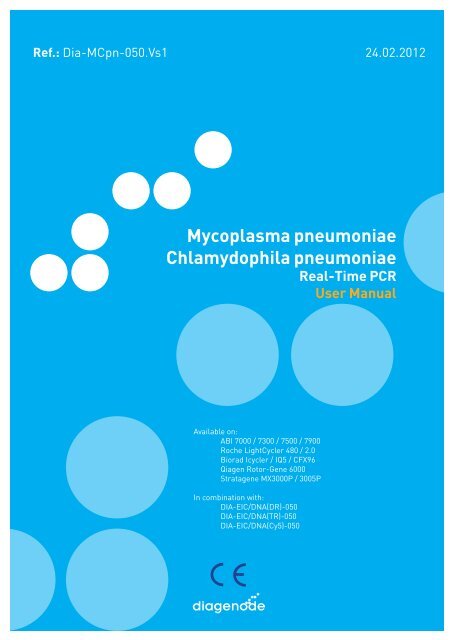
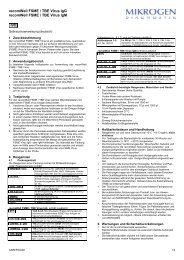

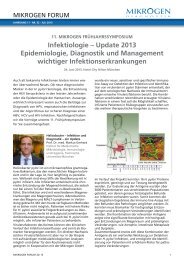
![recomLine EBV IgG [aviditet] [IgA] recomLine EBV IgM - Mikrogen](https://img.yumpu.com/19720026/1/184x260/recomline-ebv-igg-aviditet-iga-recomline-ebv-igm-mikrogen.jpg?quality=85)
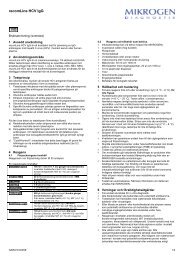
![recomBlot CMV IgG [Avidità] - Mikrogen](https://img.yumpu.com/16294013/1/184x260/recomblot-cmv-igg-avidita-mikrogen.jpg?quality=85)
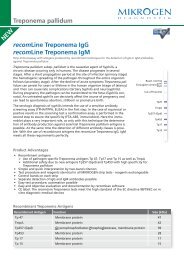
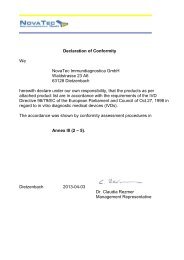
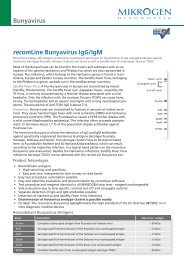
![recomBead Yersinia IgG recomBead Yersinia IgA [IgM] - Mikrogen](https://img.yumpu.com/15461030/1/184x260/recombead-yersinia-igg-recombead-yersinia-iga-igm-mikrogen.jpg?quality=85)
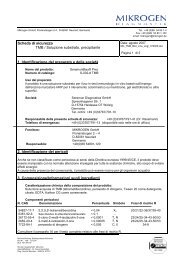
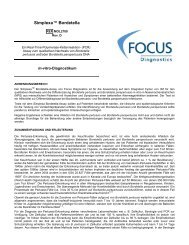
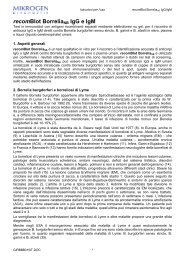
![recomLine EBV IgG [Avidity] [IgA] recomLine EBV IgM ... - Mikrogen](https://img.yumpu.com/6326010/1/184x260/recomline-ebv-igg-avidity-iga-recomline-ebv-igm-mikrogen.jpg?quality=85)